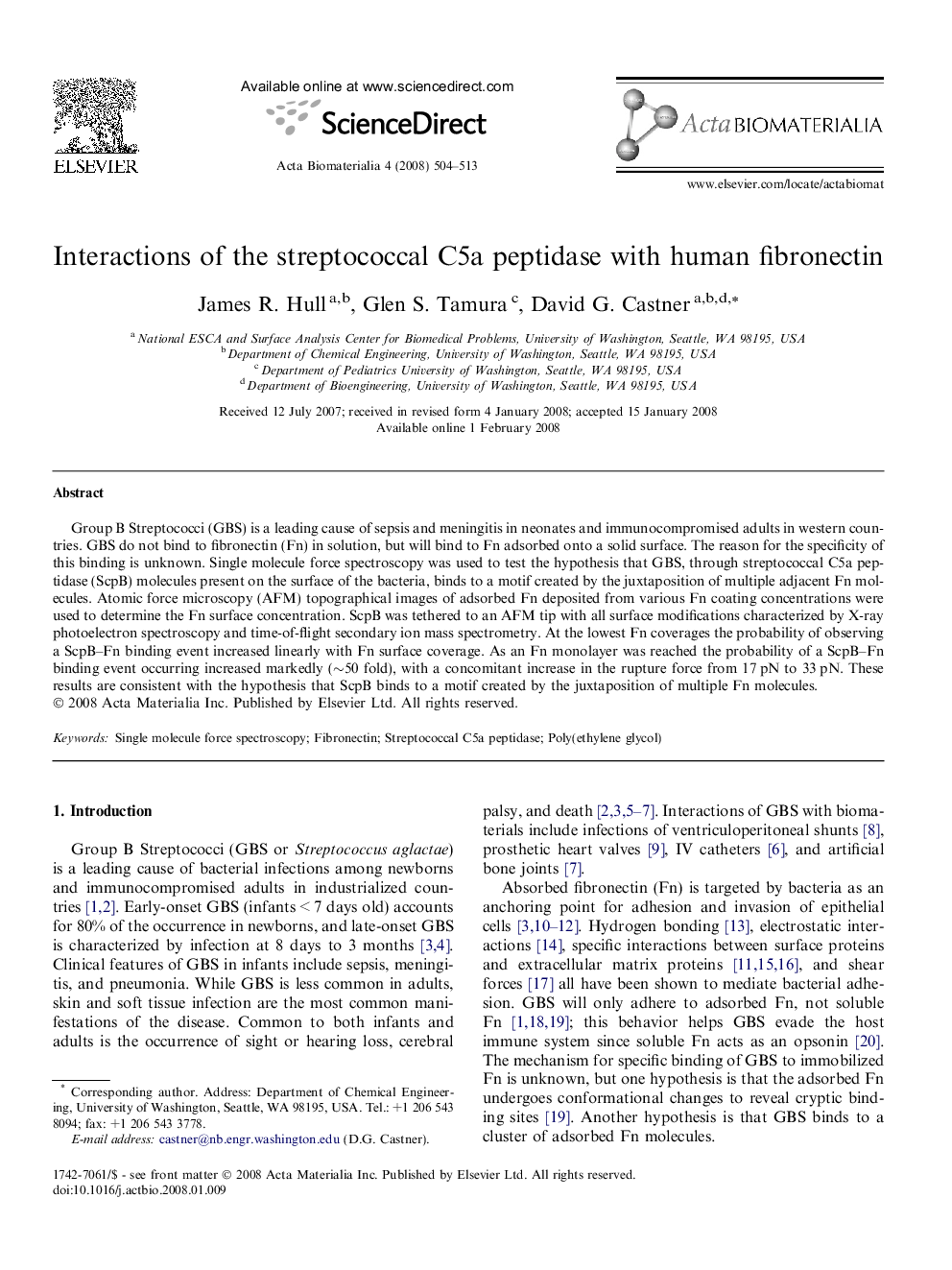| Article ID | Journal | Published Year | Pages | File Type |
|---|---|---|---|---|
| 2308 | Acta Biomaterialia | 2008 | 10 Pages |
Group B Streptococci (GBS) is a leading cause of sepsis and meningitis in neonates and immunocompromised adults in western countries. GBS do not bind to fibronectin (Fn) in solution, but will bind to Fn adsorbed onto a solid surface. The reason for the specificity of this binding is unknown. Single molecule force spectroscopy was used to test the hypothesis that GBS, through streptococcal C5a peptidase (ScpB) molecules present on the surface of the bacteria, binds to a motif created by the juxtaposition of multiple adjacent Fn molecules. Atomic force microscopy (AFM) topographical images of adsorbed Fn deposited from various Fn coating concentrations were used to determine the Fn surface concentration. ScpB was tethered to an AFM tip with all surface modifications characterized by X-ray photoelectron spectroscopy and time-of-flight secondary ion mass spectrometry. At the lowest Fn coverages the probability of observing a ScpB–Fn binding event increased linearly with Fn surface coverage. As an Fn monolayer was reached the probability of a ScpB–Fn binding event occurring increased markedly (∼50 fold), with a concomitant increase in the rupture force from 17 pN to 33 pN. These results are consistent with the hypothesis that ScpB binds to a motif created by the juxtaposition of multiple Fn molecules.
